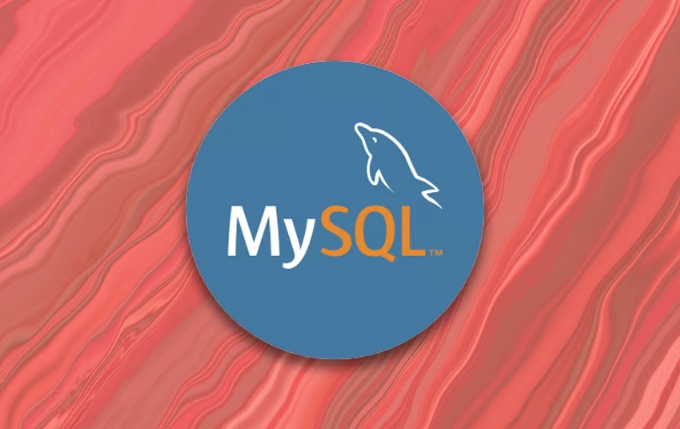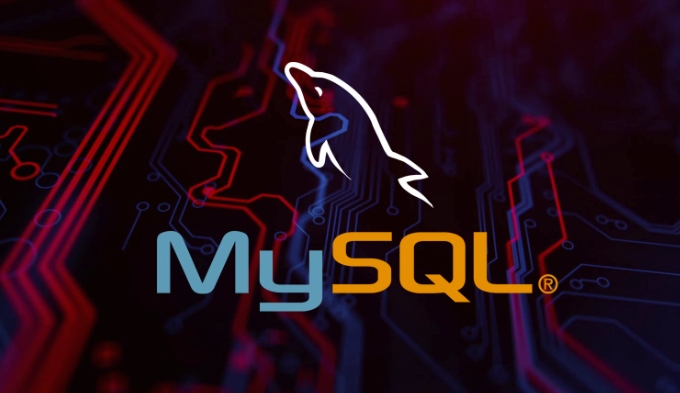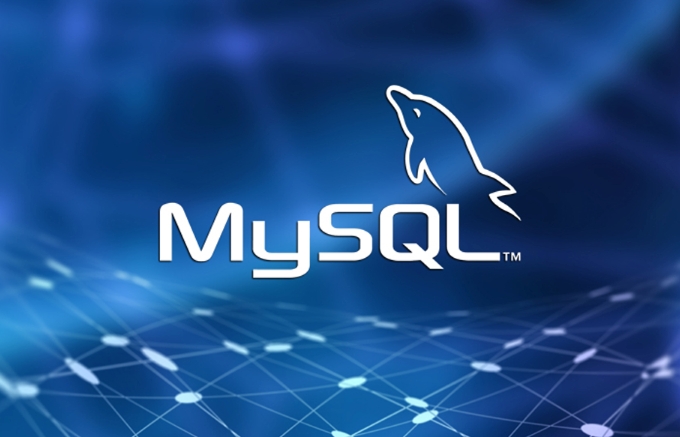Managing user accounts and granular privileges in MySQL
MySQL user permission management must follow the principle of least permissions to avoid abuse of root accounts. 1. Use the CREATE USER statement when creating a user to ensure that there is no permission at the beginning; 2. Assign specific permissions such as SELECT, INSERT, etc. as needed instead of all permissions; 3. Use GRANT and REVOKE to accurately control and recycle permissions; 4. Check permissions regularly and clean up accounts that are no longer needed; 5. Use wildcards to achieve flexible authorization but use them with caution. These methods can improve database security and reduce risks.

MySQL user permission management is actually not difficult, but it takes some experience to do it carefully and accurately. When many people use MySQL, they start by rooting and traveling around the world, but later they find that the permissions are too loose and prone to problems. This article will talk about some practical operation and setting suggestions to help you control user accounts and permissions more refinedly.

Don't use root randomly when creating a user
MySQL has a root user by default and has the highest permissions. But in actual use, we should not use root to do all operations. For example, if a web application connects to a database, it only needs to read and write specific tables, so you don’t need to give it the full library permissions.

Creating user syntax is now recommended to use CREATE USER :
CREATE USER 'app_user'@'localhost' IDENTIFIED BY 'password123';
The users created in this way have no default permissions, which are clean and safe. You can increase the permissions step by step as needed, instead of giving too much first and then slowly collecting.

Permission allocation should be "minimized on demand"
When authorizing users, many people will say directly:
GRANT ALL PRIVILEGES ON *.* TO 'some_user'@'%';
This is equivalent to relaxing all permissions, which is very dangerous. The correct way is to only give necessary permissions.
For example: your application only needs to add, delete, modify and check a few tables under a certain database, so don't authorize the entire server or all databases.
Several commonly used permission combinations are recommended:
- Read-only user:
SELECT - Write to the user:
INSERT, UPDATE, DELETE - Administrator users:
SELECT, INSERT, UPDATE, DELETE, CREATE, DROP
Example of authorization statement:
GRANT SELECT, INSERT ON mydb.mytable TO 'app_user'@'localhost';
Remember to refresh the permissions after execution:
FLUSH PRIVILEGES;
View and recycle permissions to avoid legacy risks
Sometimes when the project is replaced and the service is offline, and the corresponding database account is not cleaned, it becomes a safety hazard. You can view user permissions through the following command:
SHOW GRANTS FOR 'app_user'@'localhost';
If you find that a user's permissions are too large or no longer needed, you can reclaim the permissions or even delete the user:
REVOKE INSERT ON mydb.mytable FROM 'app_user'@'localhost'; DROP USER 'old_user'@'localhost';
Regularly checking permission lists, especially in production environments, can effectively reduce misoperation and potential attack surfaces.
Use wildcards to flexibly control permission ranges
MySQL supports the use of wildcards for bulk authorization. for example:
GRANT SELECT ON mydb.* TO 'report_user'@'%';
Indicates that the user can query all tables under the mydb database.
It can also be a little broader:
GRANT SELECT ON *.* TO 'monitor_user'@'%';
However, this kind of permission should also be used with caution, especially for accounts that are open to the external network.
Basically that's it. Permission management is not a one-time task, but a process of continuous adjustment as the system changes. You may feel troublesome at first, but after you develop the habit, you will find that a clear permission structure is not only safe, but also easier to troubleshoot problems.
The above is the detailed content of Managing user accounts and granular privileges in MySQL. For more information, please follow other related articles on the PHP Chinese website!

Hot AI Tools

Undress AI Tool
Undress images for free

Undresser.AI Undress
AI-powered app for creating realistic nude photos

AI Clothes Remover
Online AI tool for removing clothes from photos.

Clothoff.io
AI clothes remover

Video Face Swap
Swap faces in any video effortlessly with our completely free AI face swap tool!

Hot Article

Hot Tools

Notepad++7.3.1
Easy-to-use and free code editor

SublimeText3 Chinese version
Chinese version, very easy to use

Zend Studio 13.0.1
Powerful PHP integrated development environment

Dreamweaver CS6
Visual web development tools

SublimeText3 Mac version
God-level code editing software (SublimeText3)
 How to set environment variables in PHP environment Description of adding PHP running environment variables
Jul 25, 2025 pm 08:33 PM
How to set environment variables in PHP environment Description of adding PHP running environment variables
Jul 25, 2025 pm 08:33 PM
There are three main ways to set environment variables in PHP: 1. Global configuration through php.ini; 2. Passed through a web server (such as SetEnv of Apache or fastcgi_param of Nginx); 3. Use putenv() function in PHP scripts. Among them, php.ini is suitable for global and infrequently changing configurations, web server configuration is suitable for scenarios that need to be isolated, and putenv() is suitable for temporary variables. Persistence policies include configuration files (such as php.ini or web server configuration), .env files are loaded with dotenv library, and dynamic injection of variables in CI/CD processes. Security management sensitive information should be avoided hard-coded, and it is recommended to use.en
 How to make PHP container support automatic construction? Continuously integrated CI configuration method of PHP environment
Jul 25, 2025 pm 08:54 PM
How to make PHP container support automatic construction? Continuously integrated CI configuration method of PHP environment
Jul 25, 2025 pm 08:54 PM
To enable PHP containers to support automatic construction, the core lies in configuring the continuous integration (CI) process. 1. Use Dockerfile to define the PHP environment, including basic image, extension installation, dependency management and permission settings; 2. Configure CI/CD tools such as GitLabCI, and define the build, test and deployment stages through the .gitlab-ci.yml file to achieve automatic construction, testing and deployment; 3. Integrate test frameworks such as PHPUnit to ensure that tests are automatically run after code changes; 4. Use automated deployment strategies such as Kubernetes to define deployment configuration through the deployment.yaml file; 5. Optimize Dockerfile and adopt multi-stage construction
 How to build an online customer service robot with PHP. PHP intelligent customer service implementation technology
Jul 25, 2025 pm 06:57 PM
How to build an online customer service robot with PHP. PHP intelligent customer service implementation technology
Jul 25, 2025 pm 06:57 PM
PHP plays the role of connector and brain center in intelligent customer service, responsible for connecting front-end input, database storage and external AI services; 2. When implementing it, it is necessary to build a multi-layer architecture: the front-end receives user messages, the PHP back-end preprocesses and routes requests, first matches the local knowledge base, and misses, call external AI services such as OpenAI or Dialogflow to obtain intelligent reply; 3. Session management is written to MySQL and other databases by PHP to ensure context continuity; 4. Integrated AI services need to use Guzzle to send HTTP requests, safely store APIKeys, and do a good job of error handling and response analysis; 5. Database design must include sessions, messages, knowledge bases, and user tables, reasonably build indexes, ensure security and performance, and support robot memory
 How to build an independent PHP task container environment. How to configure the container for running PHP timed scripts
Jul 25, 2025 pm 07:27 PM
How to build an independent PHP task container environment. How to configure the container for running PHP timed scripts
Jul 25, 2025 pm 07:27 PM
Building an independent PHP task container environment can be implemented through Docker. The specific steps are as follows: 1. Install Docker and DockerCompose as the basis; 2. Create an independent directory to store Dockerfile and crontab files; 3. Write Dockerfile to define the PHPCLI environment and install cron and necessary extensions; 4. Write a crontab file to define timing tasks; 5. Write a docker-compose.yml mount script directory and configure environment variables; 6. Start the container and verify the log. Compared with performing timing tasks in web containers, independent containers have the advantages of resource isolation, pure environment, strong stability, and easy expansion. To ensure logging and error capture
 How to build a log management system with PHP PHP log collection and analysis tool
Jul 25, 2025 pm 08:48 PM
How to build a log management system with PHP PHP log collection and analysis tool
Jul 25, 2025 pm 08:48 PM
Select logging method: In the early stage, you can use the built-in error_log() for PHP. After the project is expanded, be sure to switch to mature libraries such as Monolog, support multiple handlers and log levels, and ensure that the log contains timestamps, levels, file line numbers and error details; 2. Design storage structure: A small amount of logs can be stored in files, and if there is a large number of logs, select a database if there is a large number of analysis. Use MySQL/PostgreSQL to structured data. Elasticsearch Kibana is recommended for semi-structured/unstructured. At the same time, it is formulated for backup and regular cleaning strategies; 3. Development and analysis interface: It should have search, filtering, aggregation, and visualization functions. It can be directly integrated into Kibana, or use the PHP framework chart library to develop self-development, focusing on the simplicity and ease of interface.
 Advanced conditional query and filtering of relational data in MySQL/Laravel
Jul 25, 2025 pm 08:39 PM
Advanced conditional query and filtering of relational data in MySQL/Laravel
Jul 25, 2025 pm 08:39 PM
This article aims to explore how to use EloquentORM to perform advanced conditional query and filtering of associated data in the Laravel framework to solve the need to implement "conditional connection" in database relationships. The article will clarify the actual role of foreign keys in MySQL, and explain in detail how to apply specific WHERE clauses to the preloaded association model through Eloquent's with method combined with closure functions, so as to flexibly filter out relevant data that meets the conditions and improve the accuracy of data retrieval.
 Optimizing MySQL for Financial Data Storage
Jul 27, 2025 am 02:06 AM
Optimizing MySQL for Financial Data Storage
Jul 27, 2025 am 02:06 AM
MySQL needs to be optimized for financial systems: 1. Financial data must be used to ensure accuracy using DECIMAL type, and DATETIME is used in time fields to avoid time zone problems; 2. Index design should be reasonable, avoid frequent updates of fields to build indexes, combine indexes in query order and clean useless indexes regularly; 3. Use transactions to ensure consistency, control transaction granularity, avoid long transactions and non-core operations embedded in it, and select appropriate isolation levels based on business; 4. Partition historical data by time, archive cold data and use compressed tables to improve query efficiency and optimize storage.
 MySQL Database Cost-Benefit Analysis for Cloud Migration
Jul 26, 2025 am 03:32 AM
MySQL Database Cost-Benefit Analysis for Cloud Migration
Jul 26, 2025 am 03:32 AM
Whether MySQL is worth moving to the cloud depends on the specific usage scenario. If your business needs to be launched quickly, expand elastically and simplify operations and maintenance, and can accept a pay-as-you-go model, then moving to the cloud is worth it; but if your database is stable for a long time, latency sensitive or compliance restrictions, it may not be cost-effective. The keys to controlling costs include selecting the right vendor and package, configuring resources reasonably, utilizing reserved instances, managing backup logs and optimizing query performance.







